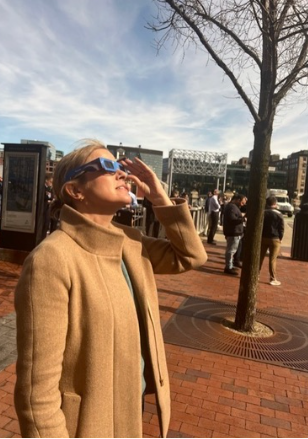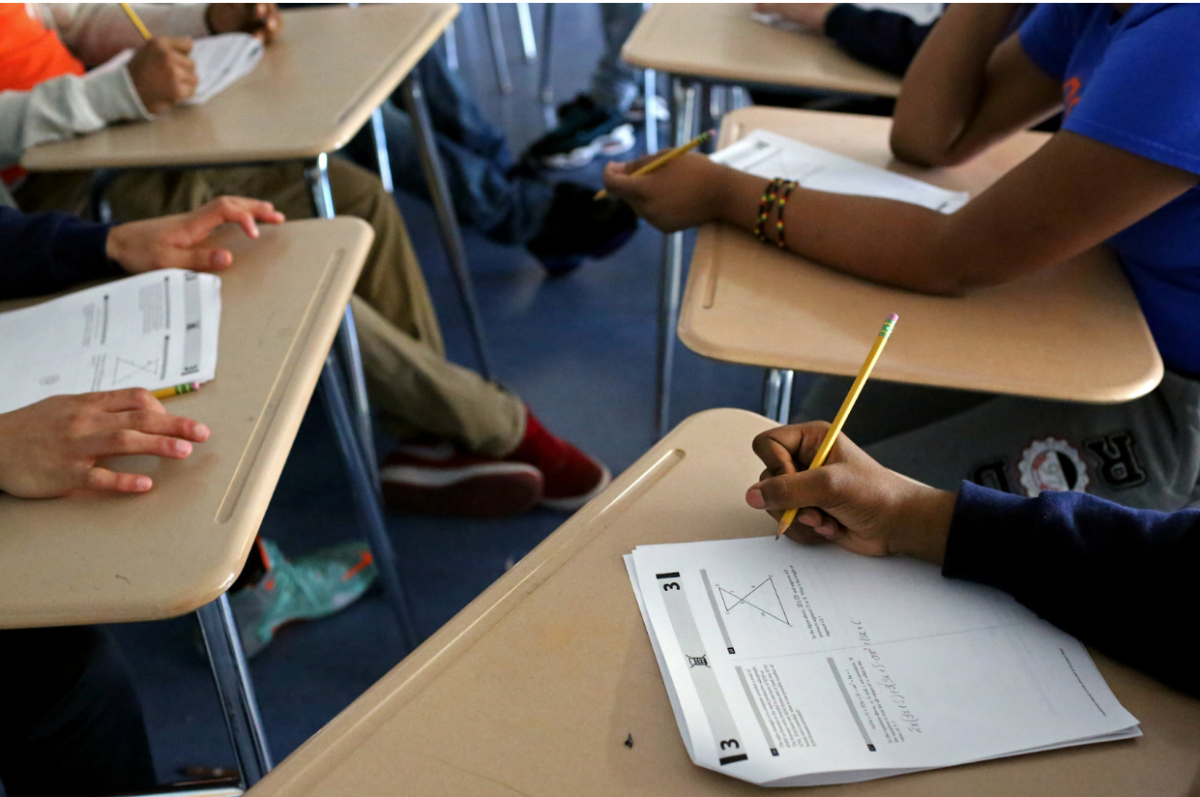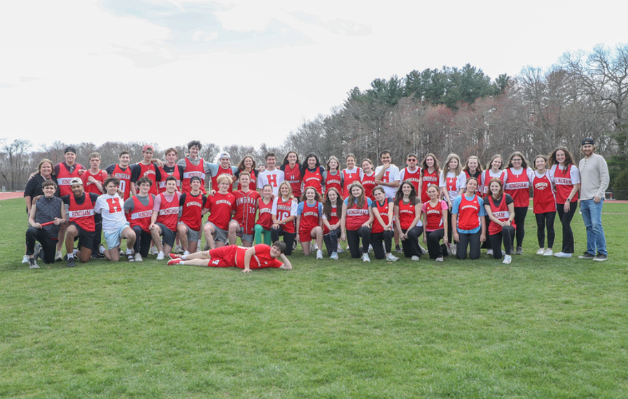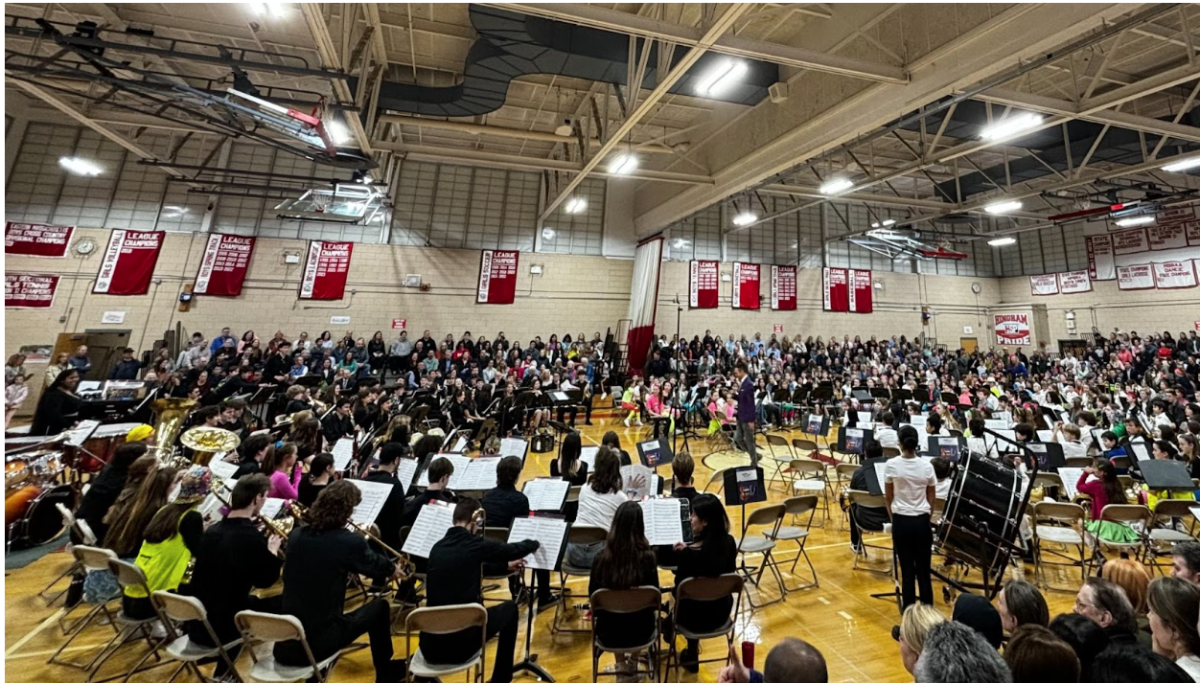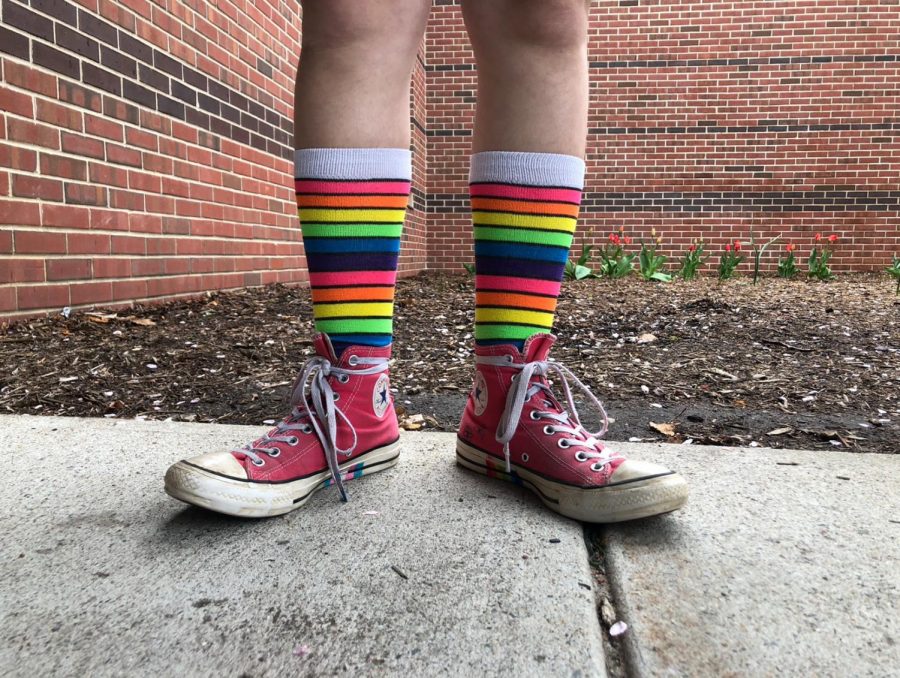On April 27, Silence Spoke Volumes
Participating junior Eli Fano shows off his “Pride flag” socks.
April 29, 2018
According to The Hill, a 2015 survey revealed that 11% of Massachusetts students identify with sexualities other than straight, and 2.9% identify as transgender.
And yet, according to Junior Patrick Whamond, not all LGBTQ+ students can live openly. “Students, as part of the LGBT community, are being silenced and erased,” asserts Whamond, who identifies as gay.
“Students, as part of the LGBT community, are being silenced and erased.”
National nonprofit GLSEN cites this silencing as the reason for their organization of the National Day of Silence, an annual event in which students vow to remain silent for the entire school day. A statement on GLSEN’s website reads: “Nearly 4 in 5 LGBTQ students don’t see positive LGBTQ representation in their curriculum, nearly 9 in 10 experience verbal harassment, and almost a third miss school for feeling unsafe or uncomfortable. The Day of Silence is a national movement to highlight the silencing and erasure of LGBTQ students in school, which demands that school leaders take action to be more inclusive.”
Hingham High students have participated in the Day of Silence for the last 12 years, according to Gay-Straight Alliance adviser Mr. Lalli. This year, the national event fell on Friday, April 27. Speaking before the day, Junior Eleanor Smith explained, “I’m doing it because I think it’s a great way to show solidarity and support for the LGBT community within this high school.”
As a member of GSA, Smith this week helped organize and promote an optional activity to be implemented in social studies classes, in which students would be forced to introduce themselves without mentioning key aspects of their personality. The idea was to mirror the secrecy with which LGBTQ+ students must hide their identities. According to Whamond, “A lot of people found it really difficult, but unfortunately, that’s the reality that a lot of people live with today.”
This year, at least 50 Hingham High students remained silent all day, according to Mr. Lalli’s estimate. From the 8 AM bell to the 2:35 dismissal, participants relied upon a combination of improvised sign language, lip reading, and furious notepad-scribbling in order to communicate. Whamond struggled to participate in a group quiz during math class; in her graphics class, Smith had to learn how to give constructive criticism without using any words. When the last bell sounded, participating junior Vivian McIsaac let out a sigh of relief.
The majority of the student body seemed supportive of participants, and teachers remained flexible with their now-silent pupils. No students opposed to the event agreed to speak with the Harborlight.
Despite a successful day of silence, participant Nick DeSilva was unhappy with the event. “Not enough people did it,” he remarked, after breaking his silence. Whamond and Smith agreed that more student body participation would amplify the message. “The more people you get behind a cause, the more effective it is,” argued Whamond.
“I want to walk through the hallways and hear absolutely nothing. That would be so powerful, dude.”
DeSilva pondered whether a lack of student body knowledge was to blame for the lack of participation. He suggested making it mandatory that, in addition to the activity, Social Studies teachers “…take a couple of minutes to explain what it’s all about. Then maybe more people would do it.” He went on to explain his vision of a successful Day of Silence: “I want to walk through the hallways and hear absolutely nothing. That would be so powerful, dude.”
Though their numbers were relatively low, participants in the Day of Silence certainly called attention to their cause. They highlighted the ongoing struggles of LGBTQ+ youth in the United States, showed solidarity with those within the HHS community, and declared their commitment to ending the silence of youths- all without saying a single word.



